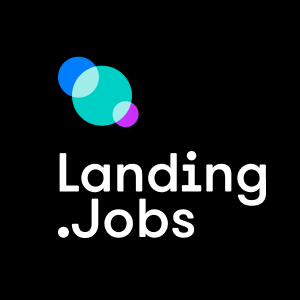You might be familiar with the term Lean Startup that focuses on prioritising and launching your product as soon as possible and then analysing the results. So, why not do same for recruitment? Why not simplify the hiring process and test candidates before they officially join your team for example?
To better explain this Lean Recruitment concept we have spoken to Yong Kim, co-founder at Wonolo. Yong Kim, has written about this topic in the past and he believes it’s time to break away from traditional recruitment methods. Forget about resumes and never ending interviews. Cut it down to the basics and hire more efficiently with Lean Recruitment.
What is Lean Recruiting?
The concept of “lean”, whether it’s related to Lean Manufacturing, Lean Production, Lean Enterprise or Lean Startup, focuses on creating value for end users by reducing any unnecessary use of limited resources. One of the key components of the “lean” process is the rapid feedback loop — multiple iterations to quickly and constantly incorporate end users’ feedback.
Lean Recruiting is based on this very principle where companies can create value (i.e. finding top talent) for end users (i.e. organisations, teams, divisions) by reducing any unnecessary use of limited resources (i.e. expensive and time consuming process of posting jobs, reviewing resumes and interviewing candidates). This can be done based on the rapid and multiple feedback loop (i.e. testing out candidates and getting quick feedback on their on-the-job performance).
Why do you think interviews and resumes aren’t useful anymore?
There have been numerous studies and articles written which suggested no real correlation between interviews and real job performance (Why interviews are a waste of time, Even Google Doesn’t Do Interviews Better). Resume reviews and interviews can be effective in eliminating the bottom quartile candidates who do not meet a certain set of thresholds that are absolute minimum requirements of the job. However, for the remaining 75% of the candidates, resume and interviews fail to provide any indication on who will fit well within the organisation, who will be loyal through ups and downs and who will perform the best at the job.
The very reason is that you have not yet seen how these candidates will react in the real job setting. This is analogous to situations in manufacturing or startups where you do not know how your customers will react until you release your product and service. You can guess based on various data points and your gut reaction, but again, this is just your best guess at the end of the day.
How can companies recruit better, especially in tech? How can this Lean Recruiting model be used when hiring tech people?
The technology industry, from large enterprises to small startups, has been one of the fastest adopters of Lean and Agile in their product development process — to launch quickly even though it may not be perfect, get feedback, iterate and improve. Yet, when it comes to recruiting talent, many tech companies still rely on the traditional method of recruiting — reviewing resumes and conducting a series of interviews which can often be a long drawn-out process. This is a paradox.
I believe that the Lean Recruiting model can be used in the following way, and in fact, I have seen more and more startups doing something similar to this in practice:
- Quickly screen and weed out candidates that do not meet the minimum job requirements.
- Bring in remaining candidates over the next 2–3 days and have them go through the job that they will be performing if they were to be hired. Set up the situation as close to real as possible.
- Have your team members treat these candidates as if they are new members of the team during these days.
- Collect feedback at the end of each day and share notes.
- Bring in final candidates (select few) based on multiple days of feedback, have them perform the same job again for one day and make the final decision.
One of the most important aspects of this process is the feedback loop where the team that is in need of hiring talent is fully engaged during this process and can provide as much feedback as possible.
At we always advise companies to test or challenge candidates before making the final call and you mentioned it as well in your blog post. Have you tried it in at Wonolo? How was that experience?
We definitely tried it at Wonolo! In addition, many of our customers using our service do this frequently. Instead of posting jobs on job boards, they would simply request “Wonoloers” (job seekers) to come in and do the job for a day or a few days. During this time, all Wonoloers would be considered as independent contractors and get paid for the job performed. Wonolo would take care of payroll as well as other administrative HR burdens involved. Based on the actual job performance, our customers may offer a full time job to some of their top performers. Feedback from both sides so far has been great — our customers commented that some of their best performing employees were found through Wonolo. Wonoloers love it because they were able to show vs. tell what they could do.
Do you think referrals are useful in the hiring process? Do you usually follow up with referrers?
Absolutely. I believe referrals take away a lot of the guess work during the recruiting process and can significantly reduce resources (time, money, etc.) for both employers and candidates. This is especially true if the source of referral is someone you can trust and respect. I see many new startups formed by the same ex-colleagues/teams who were tremendously successful before at other companies. I also often see and hear about many companies that some of their best hires are ones that have been referred by those people who care about what you are building.
I believe what you are building at is really powerful because you are building a trusted platform that can benefit both job seekers and employers by reducing a lot of frictions that occur during the validation process of recruiting.
How can startups hire the best people?
In my view, defining who’s “best” can be quite subjective. Yes, there are certain dimensions that make one candidate better than others. For example, it may be easier to identify who is the best iOS developer out there in terms of sheer engineering capabilities. However, what if that person does not get along with the rest of the team? What if the person constantly looks for higher-paying opportunities? If so, that person may not be the “best” candidate for the team. In tech, especially at a startup like Wonolo, we look for talent that are highly capable, but more importantly, we value candidates who believe in our mission to change the way companies think about getting their immediate job needs filled while helping job seekers find such opportunities in the most frictionless way.
It’s a long way of saying that to find the best talent, the team that is involved in the recruiting process should collectively do a great job in convincing the talent on the vision and create an environment where that person can be groomed to become the very best at the job as the team grows.
If you wish to know more about Lean Recruitment and Wonolo follow Yong Kim on Twitter at @yongkookkim.






0 Comments